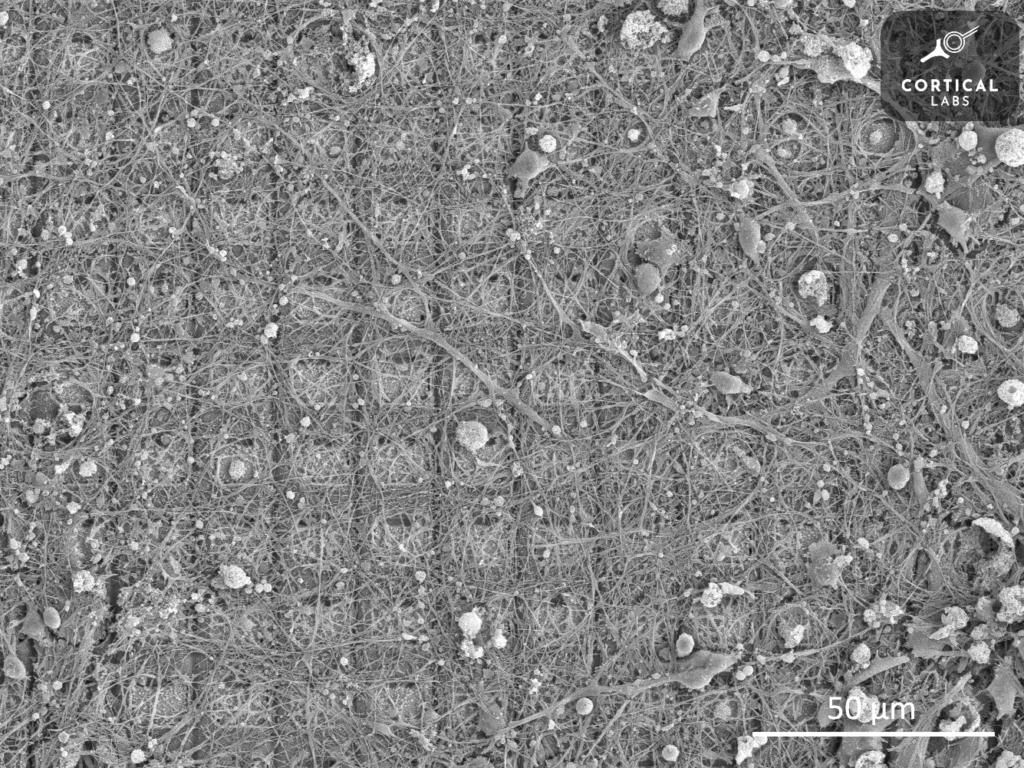Science has come a long way and every day presents an opportunity to learn something new. In recent years there has been a lot of experimentation with lab-grown things. We’ve heard of GMO fruits and veggies, we’ve heard of prosthetics for missing or damaged limbs, and stem cell research in which stem cells are used to regenerate dying, dead, or abnormal cells. Now scientists have discovered that it’s possible for lab-grown brain cells to learn new information by hooking them up to a game.
The Game.
Atari released one of the first-ever computer games to the public, called Pong. Pong is a tennis or ping pong style game in which players bounce a ball between two sides of the screen. The game was originally played on arcade machines and was released in 1972. Pong’s increasing popularity inspired developers to create a home version and in 1975 the game became available for use in homes, selling 150,000 units. Because of its popularity, other gaming companies released versions of the game and in order to keep their appeal, Atari came out with double pong in which four players could play together on teams.
The Study’s Findings.
Like something straight out of a Sci-Fi movie, an Australian-based team of researchers grew human brain cells using stem cells and mouse embryos, dubbing it a “mini-brain”. In order to see how these lab-grown brain cells might work the team then connected the “mini-brain” to a video game via electrodes. The cells learned how to play the game within 5 minutes. Although lab-grown brain cells do not have consciousness, they do have the capacity to absorb and grasp new information.
Researchers found that these lab-grown brain cells produced their own electrical activity, using less energy as the game went on. However, when the game restarted the lab-grown brain cells used more energy to understand the game’s patterns, calibrating to a new and unpredictable situation. The discovery has been categorized as “Synthetic Biological Intelligence” or SBI for short. Professor Karl Friston is a theoretical neuroscientist at University College London and co-author of these findings.
He explained, “We now have, in principle, the ultimate biomimetic ‘sandbox’ in which to test the effects of drugs and genetic variants — a sandbox constituted by exactly the same computing (neuronal) elements found in your brain and mine.”

Lab-Grown Brain Cells: Not the First Time
This is not the first time lab-grown brain cells have been used for experimental purposes. In 2013, lab-grown brain cells, or “mini-brains’‘ were first produced in order for scientists to better understand certain brain dysfunctionalities. The goal was to study Microcephaly, a genetic disorder in which the brain is too small and is considered an “isolated condition” because it can occur on its own with no relation to other birth defects. Problems associated with this condition range in severity and are all directly related to healthy development.
Children born with this condition may experience development delays such as speech, movement, or balance. Other, more serious problems may occur such as seizures or the inability to swallow food. Since 2013, the first creation of lab-grown brain cells, scientists have done much more research to understand brain development. This most recent experiment is the first time “mini-brains” have interacted with an external environment.
What This Discovery Means for the Future.
Dr. Brett Kagan, a researcher at Cortical Labs, took part in the development of these lab-grown brain cells and believes they could mean a whole new treatment option for individuals suffering from certain neurodivergent diseases. In particular, he hopes, this new technology might be used to test new treatments for patients suffering from Alzheimer’s. Because the lab-grown brain cells learned without being taught, they appear to be more adaptable and flexible than naturally occurring brain cells produced by the body. Dr. Kagan states,
“When people look at tissues in a dish, at the moment they are seeing if there is activity or no activity. But the purpose of brain cells is to process information in real time. Tapping into their true function unlocks so many more research areas that can be explored in a comprehensive way.” His future plans for testing include understanding how certain substances impact these lab-grown brain cells, or “mini-brains”.
If the studies produce results that are similar to how a person functions under the influence of these substances it could help to highlight just how effective this solution might be. Science and the development of technology have worked in tandem to strengthen medical treatments. From helping scientists develop a better understanding to making treatments more easily accessible, it is clear that modern medicine, without science, would not be possible.
Keep Reading: California Factory Producing 50,000 Lbs Of Lab-Grown Meat Per Year
Sources
- “Facts about microcephaly.” Center for Disease Control and Prevention. Retrieved October 19, 2022.
- “Pong Game.” Pong Game. Retrieved October 19, 2022.
- “Lab-grown brain cells play video game pong.” BBC News. Pallab Ghosh, October 12.
- “n vitro neurons learn and exhibit sentience when embodied in a simulated game-world.” Neuron. Brett J. Kagan, et al. October 12, 2022.
- “Live Brain Cells Playing Pong in a Dish Could Illuminate Mind’s Mechanics. CNET. Eric Mack. October 17, 2022.

